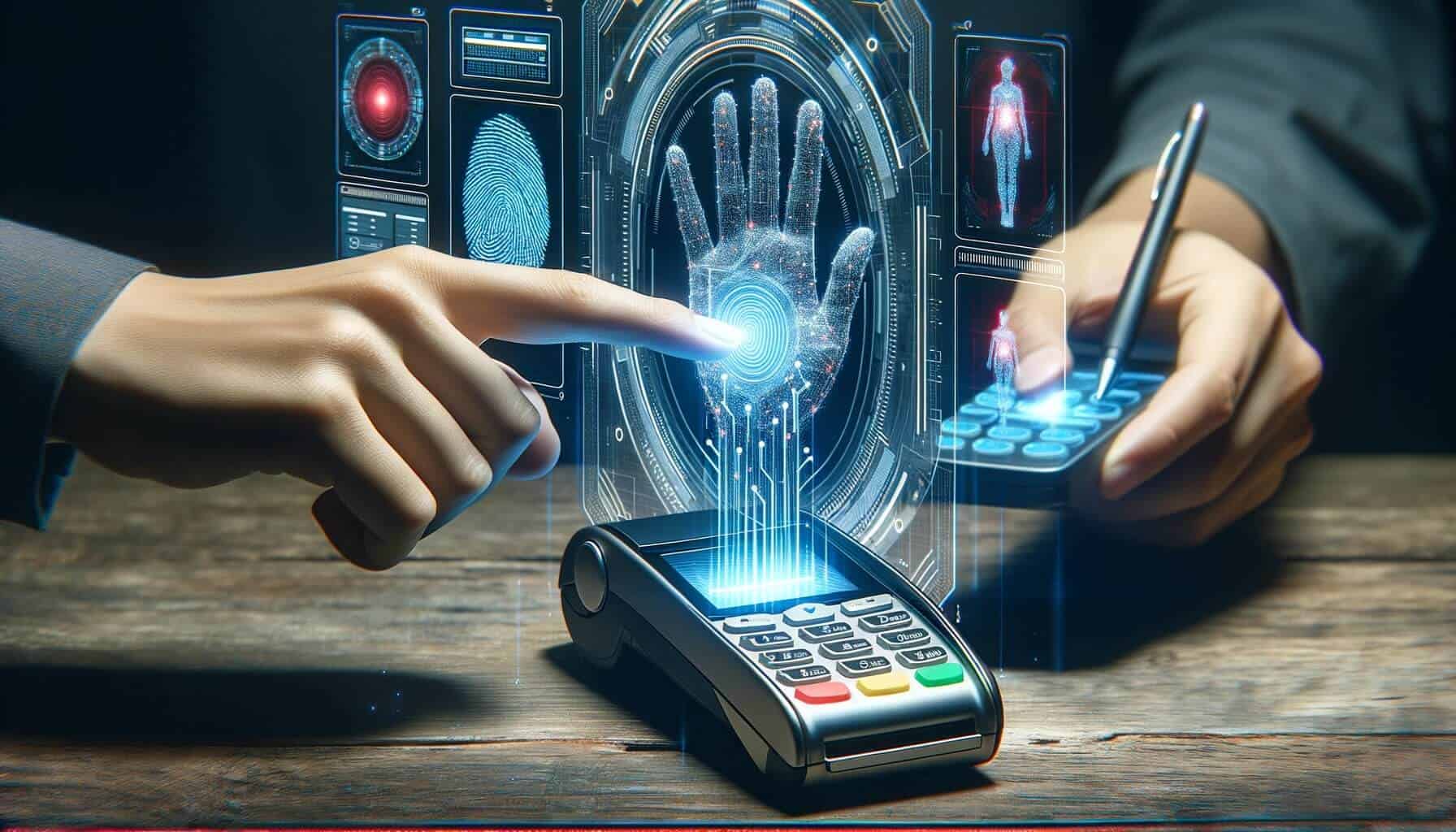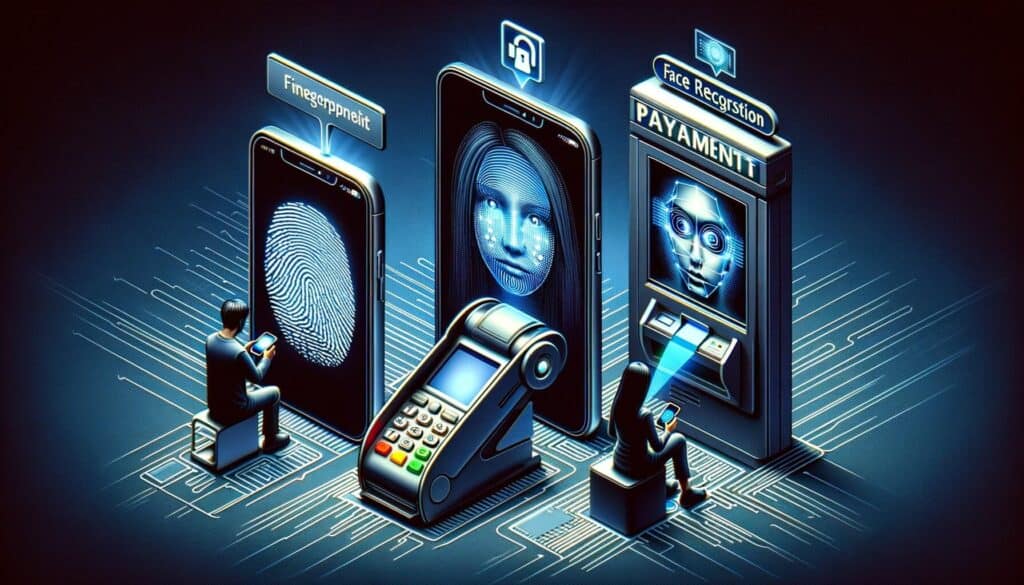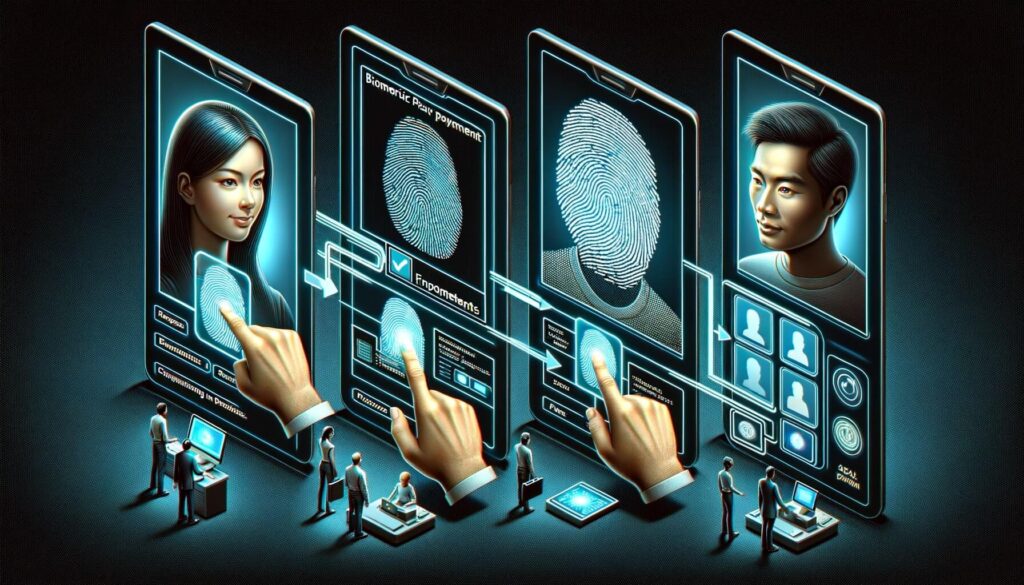
By Carol Peters March 30, 2025
In today’s digital age, the way we make payments is constantly evolving. From cash to credit cards, and now to mobile wallets, the convenience and security of payment methods have come a long way. One of the latest advancements in payment technology is biometric payments, which offer a new level of security and ease of use.
In this article, we will explore what biometric payments are, how they work, their history, different types, enrollment process, security measures, advantages and disadvantages, real-world examples, and address frequently asked questions.
Understanding Biometrics: What Are They and How Do They Work?

Biometrics refers to the measurement and analysis of unique physical or behavioral characteristics of an individual. These characteristics can include fingerprints, facial features, iris patterns, voiceprints, and even behavioral traits like typing patterns or gait. Biometric systems capture these unique traits and convert them into digital data, which can then be used for identification or authentication purposes.
The process of biometric authentication involves comparing the captured biometric data with the stored data in a database. If the two sets of data match, the individual is granted access or authentication. This process relies on the fact that biometric traits are unique to each individual and cannot be easily replicated or forged.
The Evolution of Biometric Payments: A Brief History

The concept of using biometrics for payments is not entirely new. The idea of using fingerprints for identification dates back to ancient Babylon, where fingerprints were used on clay tablets for business transactions. However, it was not until the 20th century that biometrics started to be used in a more systematic and scientific manner.
The first commercial application of biometrics in payments can be traced back to the 1970s when automated fingerprint identification system (AFIS) were developed. These systems were primarily used by law enforcement agencies for criminal identification. Over the years, advancements in technology and the increasing need for secure and convenient payment methods led to the integration of biometrics into payment systems.
Types of Biometric Payments: Exploring Different Modalities

There are several modalities or types of biometric payments, each relying on a different biometric trait for authentication. Let’s explore some of the most commonly used modalities:
1. Fingerprint Recognition: Fingerprint recognition is one of the most widely used biometric modalities. It relies on capturing and analyzing the unique patterns and ridges present on an individual’s fingertips. Fingerprint scanners are commonly found on smartphones and other devices for secure unlocking and authentication.
2. Facial Recognition: Facial recognition technology analyzes the unique features and proportions of an individual’s face to authenticate their identity. This modality has gained popularity in recent years due to its ease of use and non-intrusive nature. It is commonly used in smartphones, airports, and even retail stores for payment authentication.
3. Iris Recognition: Iris recognition technology captures and analyzes the unique patterns in an individual’s iris, which is the colored part of the eye. This modality offers a high level of accuracy and is often used in high-security environments such as government facilities or border control.
4. Voice Recognition: Voice recognition technology analyzes an individual’s voice patterns, including pitch, tone, and pronunciation, to authenticate their identity. This modality is commonly used in call centers and telephone banking for secure authentication.
5. Behavioral Biometrics: Behavioral biometrics analyze an individual’s unique behavioral traits, such as typing patterns, mouse movements, or even gait, to authenticate their identity. This modality offers continuous authentication and can be used in conjunction with other biometric modalities for enhanced security.
The Process of Enrolling in Biometric Payment Systems

To enroll in a biometric payment system, individuals need to go through a registration process where their biometric data is captured and stored securely. The exact process may vary depending on the specific system or provider, but generally, it involves the following steps:
1. Registration: The individual provides their personal information, such as name, address, and contact details, to create an account with the biometric payment system.
2. Biometric Data Capture: The individual’s biometric data is captured using specialized devices or sensors. For example, in the case of fingerprint recognition, a fingerprint scanner is used to capture the unique patterns on the fingertips.
3. Data Storage: The captured biometric data is securely stored in a database. It is important to note that biometric data is typically stored in an encrypted format to ensure privacy and security.
4. Verification and Authentication: When the individual wants to make a payment, their biometric data is compared with the stored data to verify their identity. If the two sets of data match, the payment is authorized.
How Biometric Payments Ensure Security and Fraud Prevention
One of the key advantages of biometric payments is the enhanced security they offer compared to traditional payment methods. Biometric traits are unique to each individual and cannot be easily replicated or stolen. This makes it extremely difficult for fraudsters to impersonate someone else and make unauthorized payments.
Additionally, biometric payment systems often incorporate multiple layers of security measures to further enhance protection against fraud. These measures can include encryption of biometric data, secure transmission protocols, and real-time monitoring for suspicious activities.
Advantages and Disadvantages of Biometric Payments
Biometric payments offer several advantages over traditional payment methods, but they also come with some limitations. Let’s explore the advantages and disadvantages of biometric payments:
Advantages:
1. Enhanced Security: Biometric traits are unique to each individual, making it difficult for fraudsters to impersonate someone else and make unauthorized payments.
2. Convenience: Biometric payments eliminate the need for carrying physical cards or remembering passwords. Users can simply use their biometric traits for quick and easy authentication.
3. Speed and Efficiency: Biometric authentication is typically faster than traditional methods, reducing transaction times and improving overall efficiency.
4. Accessibility: Biometric payments can be particularly beneficial for individuals with disabilities or those who have difficulty using traditional payment methods.
5. Fraud Prevention: Biometric payment systems incorporate multiple layers of security measures to detect and prevent fraudulent activities.
Disadvantages:
1. Privacy Concerns: The collection and storage of biometric data raise privacy concerns, as this sensitive information can potentially be misused if it falls into the wrong hands.
2. Cost: Implementing biometric payment systems can be costly, requiring specialized hardware and software infrastructure.
3. Reliability: Biometric systems may not always be 100% accurate, and false rejections or false acceptances can occur, leading to inconvenience for users.
4. Adoption and Standardization: The widespread adoption of biometric payments may require standardization across different platforms and systems, which can be a complex process.
Biometric Payments in Practice: Real-World Examples and Case Studies
Biometric payments have already made their way into various industries and sectors. Let’s explore some real-world examples and case studies that highlight the practical applications of biometric payments:
1. Mobile Wallets: Mobile wallet apps like Apple Pay and Samsung Pay allow users to make payments using their fingerprint or facial recognition. These apps have gained popularity due to their convenience and security.
2. Airports and Border Control: Many airports and border control agencies have implemented biometric systems to enhance security and streamline the passenger verification process. For example, facial recognition technology is used to match travelers’ faces with their passport photos for seamless authentication.
3. Retail Stores: Some retail stores have started experimenting with biometric payment systems to offer a frictionless checkout experience. Customers can simply scan their fingerprints or use facial recognition to make payments without the need for physical cards or cash.
4. Financial Institutions: Banks and financial institutions are exploring the use of biometric payments to enhance security and prevent fraud. Voice recognition technology, for example, is being used for secure telephone banking authentication.
Frequently Asked Questions (FAQs) about Biometric Payments
Q1. Are biometric payments more secure than traditional payment methods?
Answer: Yes, biometric payments offer enhanced security compared to traditional payment methods. Biometric traits are unique to each individual and cannot be easily replicated or stolen, making it difficult for fraudsters to impersonate someone else and make unauthorized payments.
Q2. Can biometric data be stolen or hacked?
Answer: Biometric data can potentially be stolen or hacked, just like any other form of sensitive information. However, reputable biometric payment systems employ encryption and other security measures to protect the stored data. It is important to choose trusted providers and ensure that proper security protocols are in place.
Q3. What happens if my biometric data is compromised?
Answer: If your biometric data is compromised, it can be a serious concern as it is not something that can be easily changed like a password. In such cases, it is important to report the incident to the relevant authorities and take necessary steps to protect your identity and financial accounts.
Q4. Can biometric payments be used for large-scale transactions?
Answer: Yes, biometric payments can be used for large-scale transactions. However, the specific transaction limits may vary depending on the system or provider. It is important to check with the respective payment platform or financial institution for any limitations.
Conclusion
Biometric payments offer a new level of security and convenience in the world of digital transactions. By leveraging unique physical or behavioral traits, these payment systems provide enhanced protection against fraud and offer a seamless user experience.
While there are concerns regarding privacy and cost, the benefits of biometric payments outweigh the drawbacks. As technology continues to advance, we can expect to see further integration of biometrics into our everyday lives, making payments more secure and effortless.
